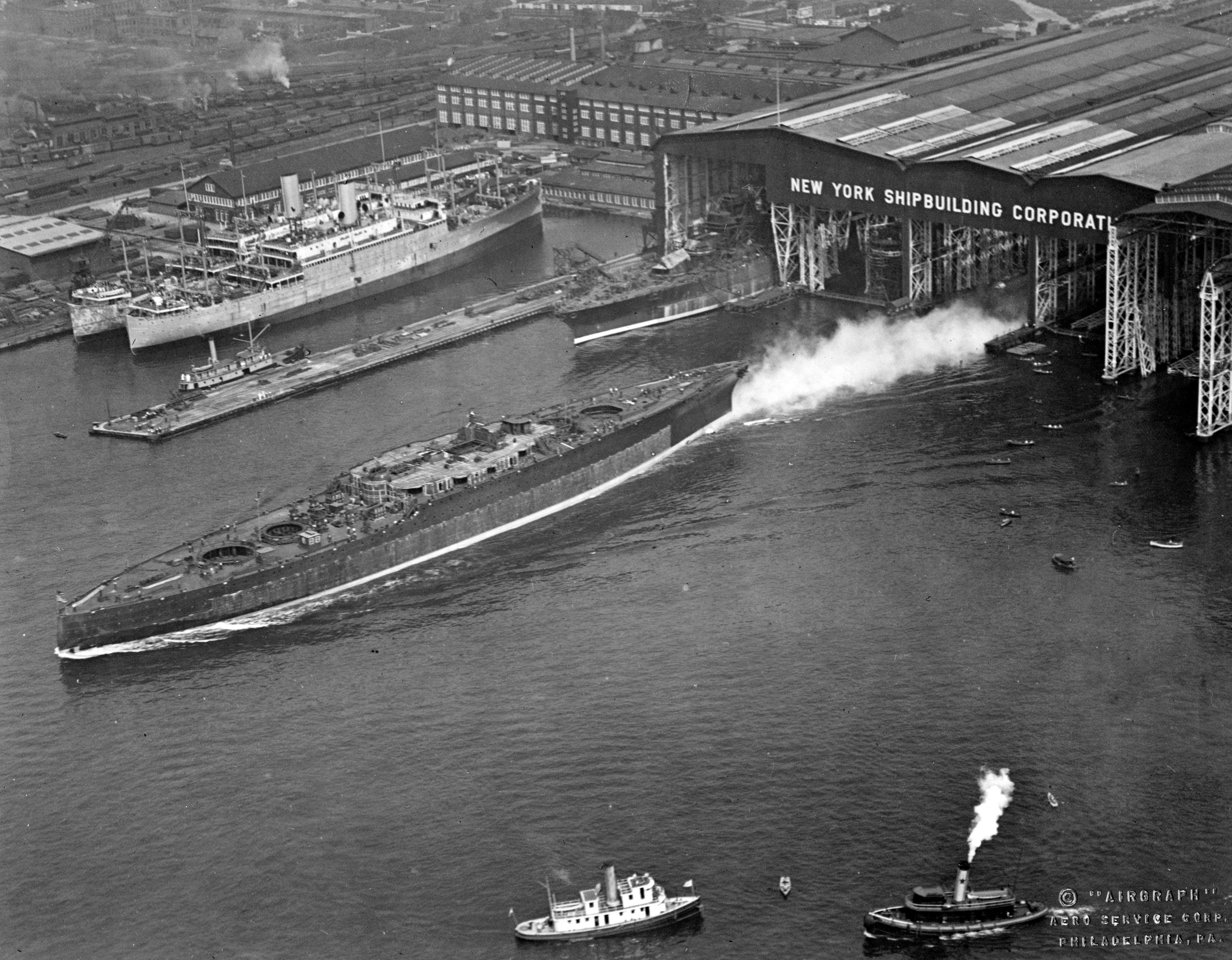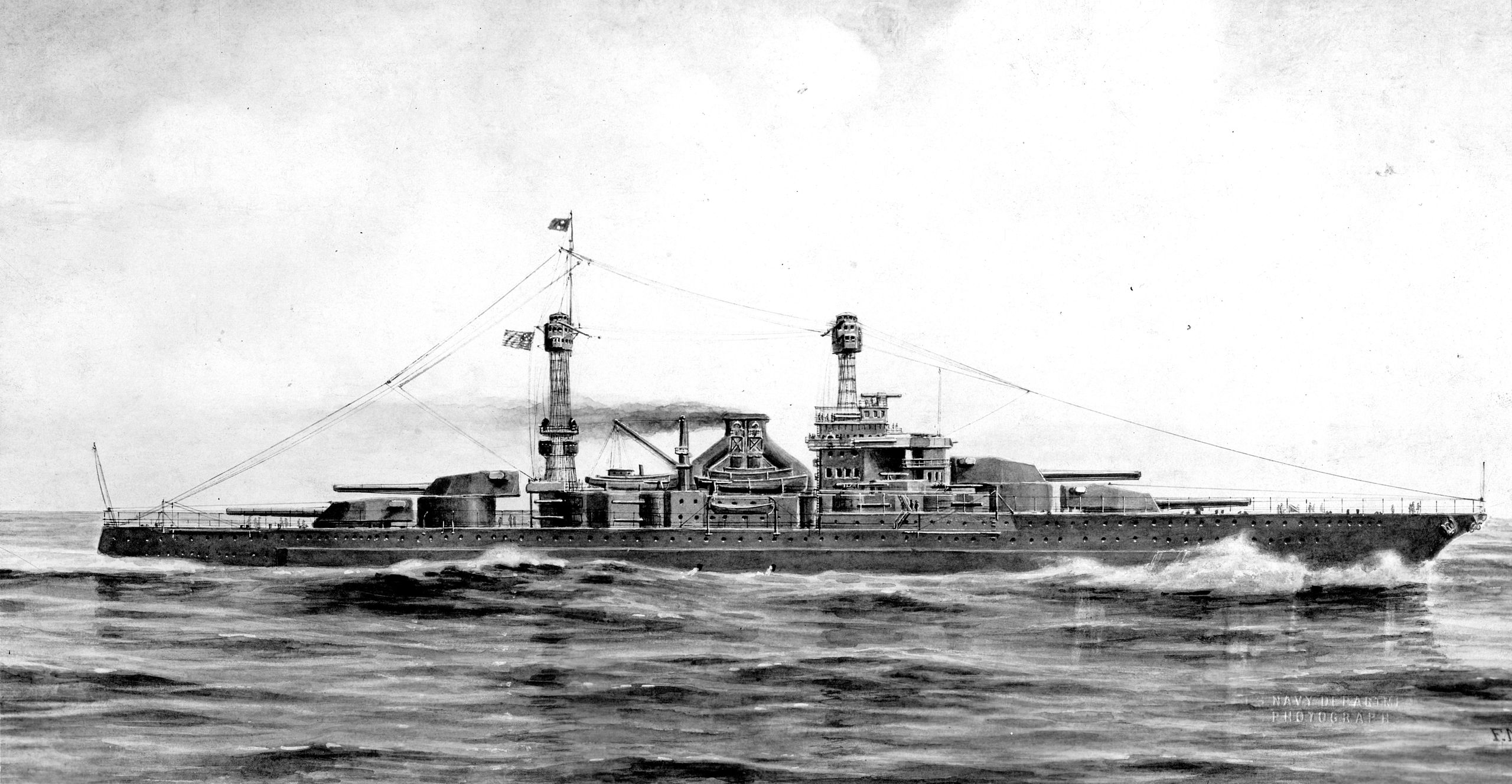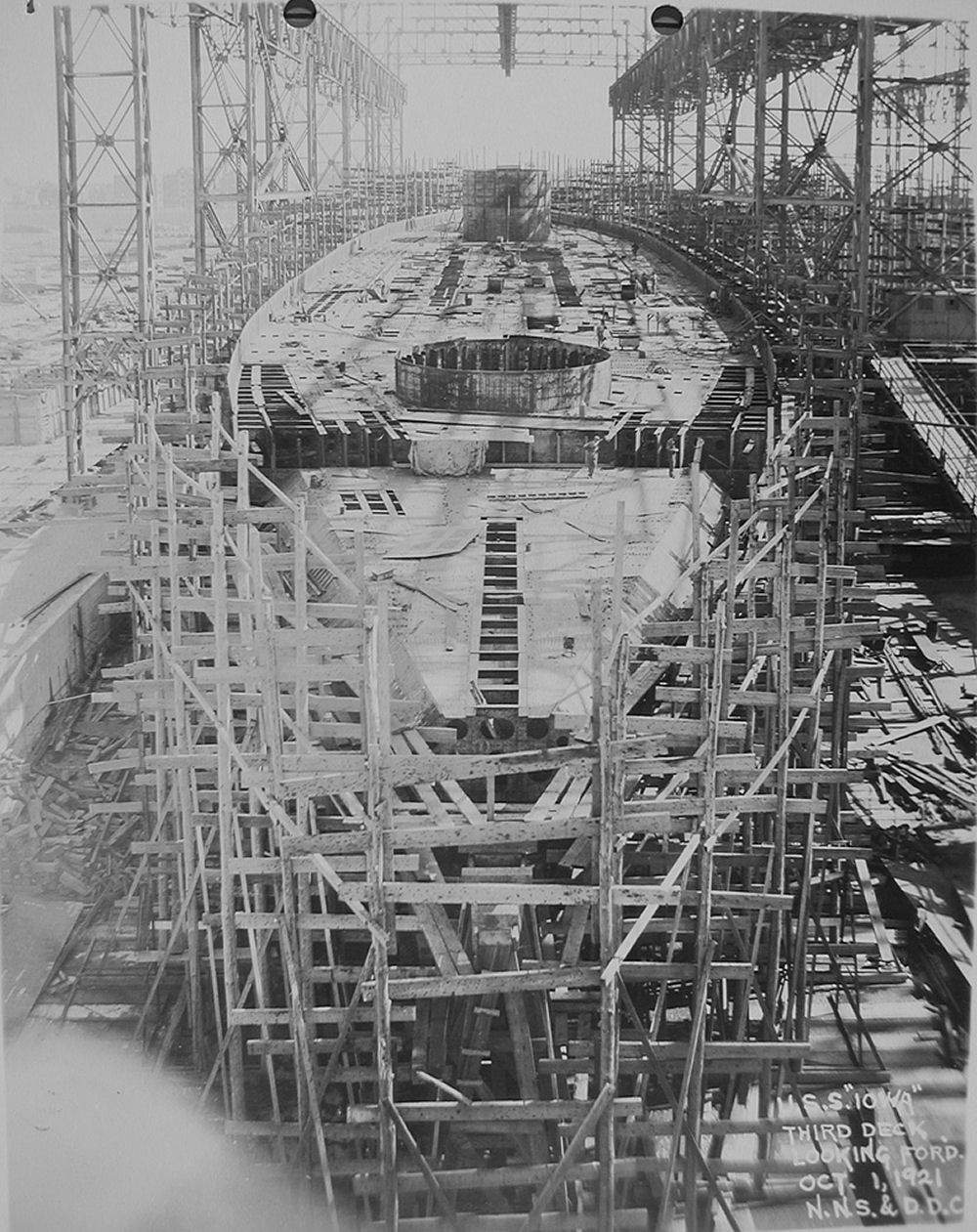| U.S. Navy Plan Emerald:
Battleships
of 1916
By Mike Bennighof, Ph.D.
April 2023
 In the years just before the First World
War, dreadnought designs took a huge leap
upwards in tonnage and firepower. The British
built their Queen Elizabeth and R-class
battleships with eight 15-inch guns apiece, the
Germans followed with their Baden class,
and the Italians with the Caracciolo class fast battleships, all with the same
main armament. Japan laid down two battleships
skipping the 15-inch stage, instead mounting
eight huge 16-inch weapons. In the years just before the First World
War, dreadnought designs took a huge leap
upwards in tonnage and firepower. The British
built their Queen Elizabeth and R-class
battleships with eight 15-inch guns apiece, the
Germans followed with their Baden class,
and the Italians with the Caracciolo class fast battleships, all with the same
main armament. Japan laid down two battleships
skipping the 15-inch stage, instead mounting
eight huge 16-inch weapons.
The United States followed suit, with its
own battleship mounting eight 16-inch guns,
the American design commencing four months
after that of the Japanese Nagato class.
The Maryland class was a variant of the preceding Tennessee, with four turrets mounting
a pair of 16-inch guns replacing the previous
design’s triple 14-inch turrets.
The four Maryland class approved in
the 1916 fiscal year were an abberation; Congress
had not previously authorized more than two
ships in a single year. But three had been
built under the 1914 appropriations, thanks
to cash gained from the sale of older ships
to Greece, and with war looming the Navy managed
to finagle four by promising to build two
of them at the politically-connected Newport
News Shipbuilding and Drydock.
Along with the powerful main battery, Maryland had a dozen five-inch guns, ten of them
in casemates in the central armored citadel,
and two in open unshielded mountings. Like
most battleships of their time, they had a
pair of submerged torpedo tubes as well. Like
previous American battleships, they were designed
to the fleet speed of 21 knots but Colorado never made even this figure.

The battleship Washington hits the Delaware River, 1 September 1921. Colorado is fitting out, upper center.
Negotiators at Washington haggled over two nearly-complete
ships, the Japanaese Mutsu and the American Washington. The Japanese rushed Mutsu into trials and delcared her complete, saving
her from the scrappers’ torches. The Americans
failed to do the same with Washington, though
in an open society it would have been far more
difficult to hide such chicanery. NNS&D
again showed its clout, preserving West Virginia while New York Shipbuilding’s Camden,
New Jersey yard stood to lose the more-advanced Washington.
The treaty was signed on 6 February 1922,
and work stopped on Washington two
days later with the ship 75.9 percent complete.
The Navy stalled on her scrapping, however,
and by the fall of 1924 she was the only warship
slated for destruction under the treaty’s
terms still in existence. When the Navy announced
that she would be sunk as a target at the
end of November 1924, a civilian clerk working
for the Navy, William Baldwin Shearer, filed
suit to stop the destruction.
Shearer argued that the ship had cost $35
million, and represented not only a significant
investment of tax money but a vital asset
to national defense. If she could not be completed
as a battleship, she should instead be converted
into an aircraft carrier. He obtained a temporary
restraining order, but the Justice Department
intervened to fight the suit while the Navy
towed the hull into the Atlantic off the Virginia
Capes. As soon as the court order was rescinded,
demolition charges shattered the hull, and
a few days later gunfire finished her off.
Maryland joined the fleet in 1921, and West Virginia and Colorado in
1923. All three served in the Second World War,
but their low speed relegated them to secondary
duties.
For the next fiscal year’s ships, the
Navy’s General Board at first proposed
a much greater increase in fighting power:
massive 80,000-ton ships carrying fifteen
18-inch guns and making 35 knots. The engineers
couldn’t confirm that such a ship was
even technically feasible, though they dutifully
made drawings. The giant battleship would be far
more expensive than the Navy could hope to
fund, and would not fit through the Panama
Canal, but it did satisfy South Carolina Sen. “Pitchfork Ben” Tillman's demand for a “maximum” design.
Instead, the Navy “settled” for
a greatly enlarged Maryland, 43,200
tons as opposed to 32,600 for the previous
design. The new South Dakota class
would be slightly faster, at 23 knots where Maryland made 21. She was 10 percent
longer and beamier, and carried an almost-identical
armor scheme. Congress funded three of them
for the 1917 fiscal year and three more for
1918.

Artist's rendition of the (first) South Dakota class.
Internally, South Dakota was almost identical
to Maryland, only much larger. South
Dakota had a dozen boilers compared to eight
in Maryland, and could deliver 50,000
horsepower compared to 28,900 in the older design.
The most noticeable difference was the huge
single funnel of South Dakota, with all
of her exhausts trunked together.
In place of the dual turrets for Maryland’s 16-inch guns, South Dakota had
triple turrets. In place of Maryland’s 45-caliber main weapons, South Dakota had the much more powerful 50-caliber
model.
She also carried a heavier secondary battery,
sixteen 6-inch rather than fourteen 5-inch
guns. Those sited aft would be mounted with
the same odd “tower” arrangement
of the Omaha-class
light cruisers that were part of the same
building program. The forward pairs had the
lower gun in a casemate and one above it mounted
open and unshielded. These probably would
have been found just as unsatisfactory as
the cruiser mounts. While this increased her
firepower, the real reason seems to have been
to coordinate gun production with the Omaha
program, though the Navy thought highly of
the 6-inch/53-caliber gun.

Iowa under construction at Newport News Shipbuilding.
While South Dakota represented a great
increase in size and fighting power over Maryland, some within the Navy wanted to increase
her gunnery even more. A new 18-inch gun would
have been used in the Fiscal Year 1919 battleships,
and some pointed out that the dual turret planned
for these ships could be fitted in the same
space as the triple 16-inch turret of the South Dakota class. Agitation to re-cast
the three 1918 ships (North Carolina, Iowa and Massachusetts) with the giant
rifles went nowhere, though reports surfaced
in the international naval press that Montana had been so fitted.
The Americans sacrificed all six ships at
the Washington talks, as none of them
were close to completion. The most advanced, South Dakota herself, was said to be
38.5 percent complete when construction halted
on 8 February 1922, with Indiana and Iowa not far behind. Montana and North Carolina were declared 28 percent
complete; Massachusetts lagged well
behind at 11 percent. Armor and boilers from
the cancelled South Dakota class and
from Washington were used to rebuild
older coal-fired dreadnoughts during the 1920s
and 1930s, so at least some of Shearer’s
concerns were met — the assets were
not totally wasted.
Click here to join the Gold Club.
See your Gold Club Insider newsletter for ordering information.
Sign up for our newsletter right here. Your info will never be sold or transferred; we'll just use it to update you on new games and new offers.
Mike Bennighof is president of Avalanche Press and holds a doctorate in history from Emory University. A Fulbright Scholar and NASA Journalist in Space finalist, he has published a great many books, games and articles on historical subjects; people are saying that some of them are actually good.
He lives in Birmingham, Alabama with his wife and three children. He misses his Iron Dog, Leopold.
Want to keep Daily Content free of third-party ads? You can send us some love (and cash) through this link right here.
|
